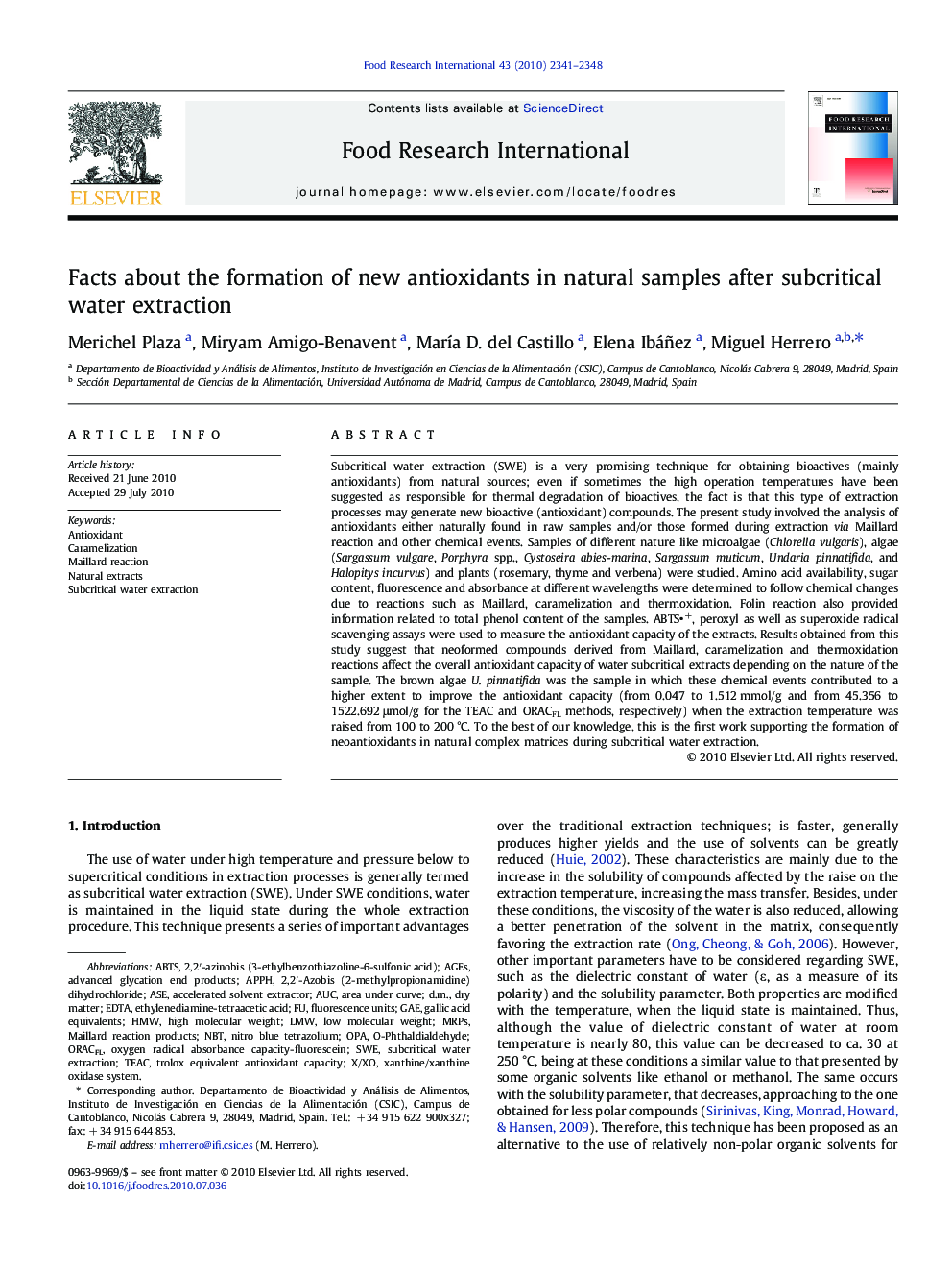| کد مقاله | کد نشریه | سال انتشار | مقاله انگلیسی | نسخه تمام متن |
|---|---|---|---|---|
| 4562536 | 1330720 | 2010 | 8 صفحه PDF | دانلود رایگان |

Subcritical water extraction (SWE) is a very promising technique for obtaining bioactives (mainly antioxidants) from natural sources; even if sometimes the high operation temperatures have been suggested as responsible for thermal degradation of bioactives, the fact is that this type of extraction processes may generate new bioactive (antioxidant) compounds. The present study involved the analysis of antioxidants either naturally found in raw samples and/or those formed during extraction via Maillard reaction and other chemical events. Samples of different nature like microalgae (Chlorella vulgaris), algae (Sargassum vulgare, Porphyra spp., Cystoseira abies-marina, Sargassum muticum, Undaria pinnatifida, and Halopitys incurvus) and plants (rosemary, thyme and verbena) were studied. Amino acid availability, sugar content, fluorescence and absorbance at different wavelengths were determined to follow chemical changes due to reactions such as Maillard, caramelization and thermoxidation. Folin reaction also provided information related to total phenol content of the samples. ABTS+, peroxyl as well as superoxide radical scavenging assays were used to measure the antioxidant capacity of the extracts. Results obtained from this study suggest that neoformed compounds derived from Maillard, caramelization and thermoxidation reactions affect the overall antioxidant capacity of water subcritical extracts depending on the nature of the sample. The brown algae U. pinnatifida was the sample in which these chemical events contributed to a higher extent to improve the antioxidant capacity (from 0.047 to 1.512 mmol/g and from 45.356 to 1522.692 μmol/g for the TEAC and ORACFL methods, respectively) when the extraction temperature was raised from 100 to 200 °C. To the best of our knowledge, this is the first work supporting the formation of neoantioxidants in natural complex matrices during subcritical water extraction.
Journal: Food Research International - Volume 43, Issue 10, December 2010, Pages 2341–2348